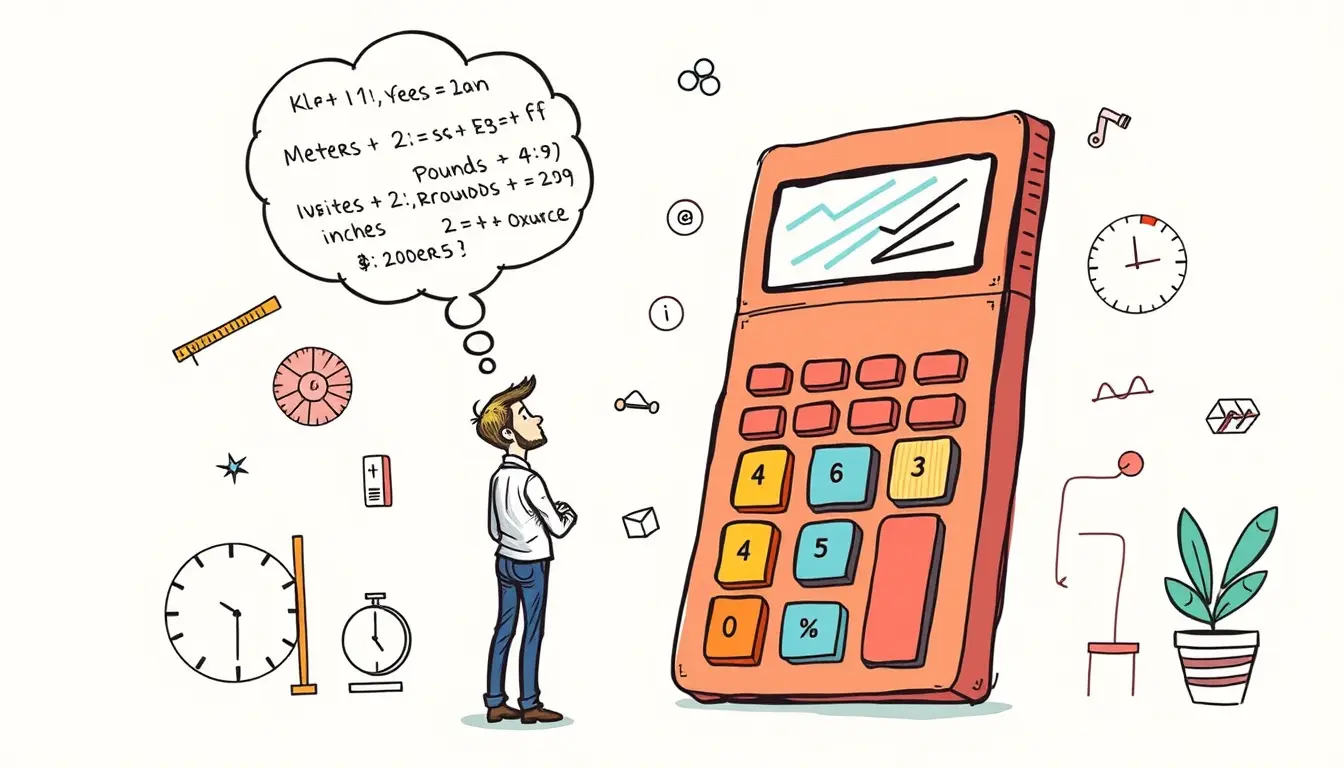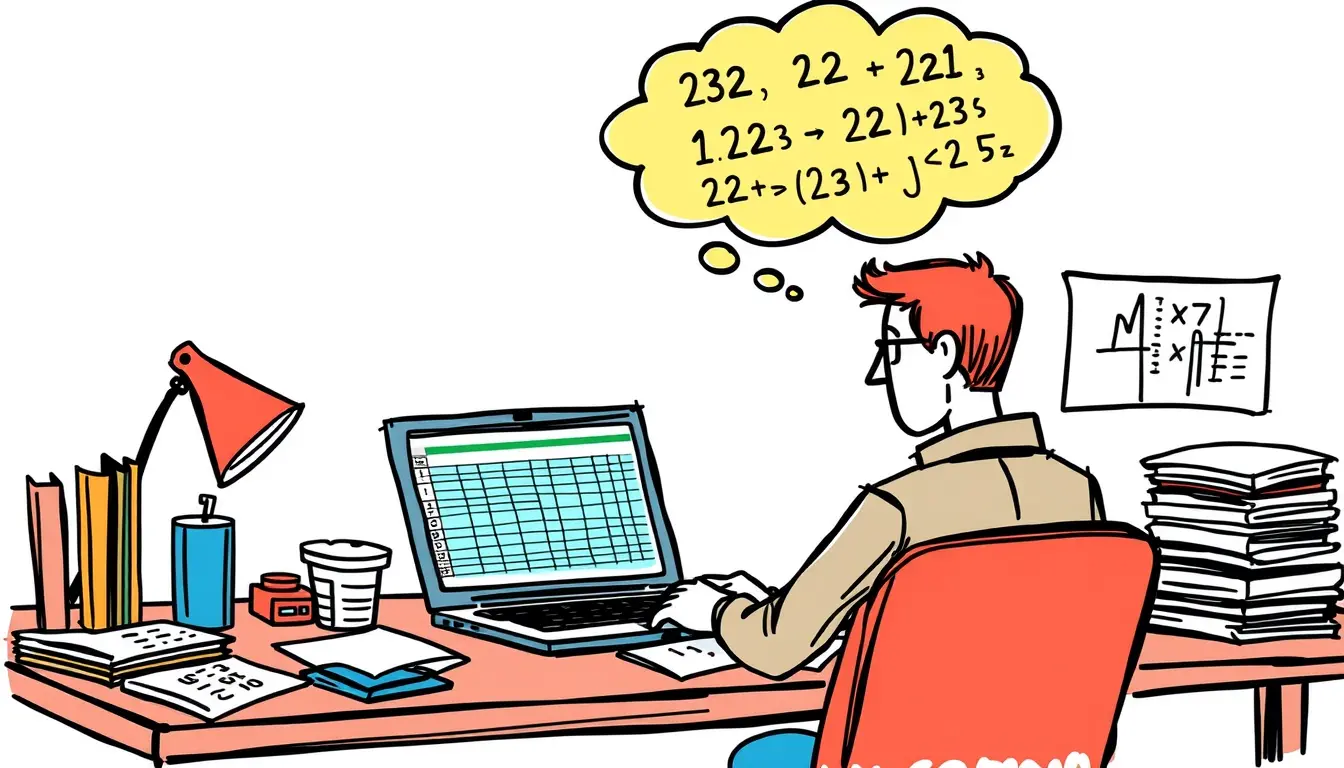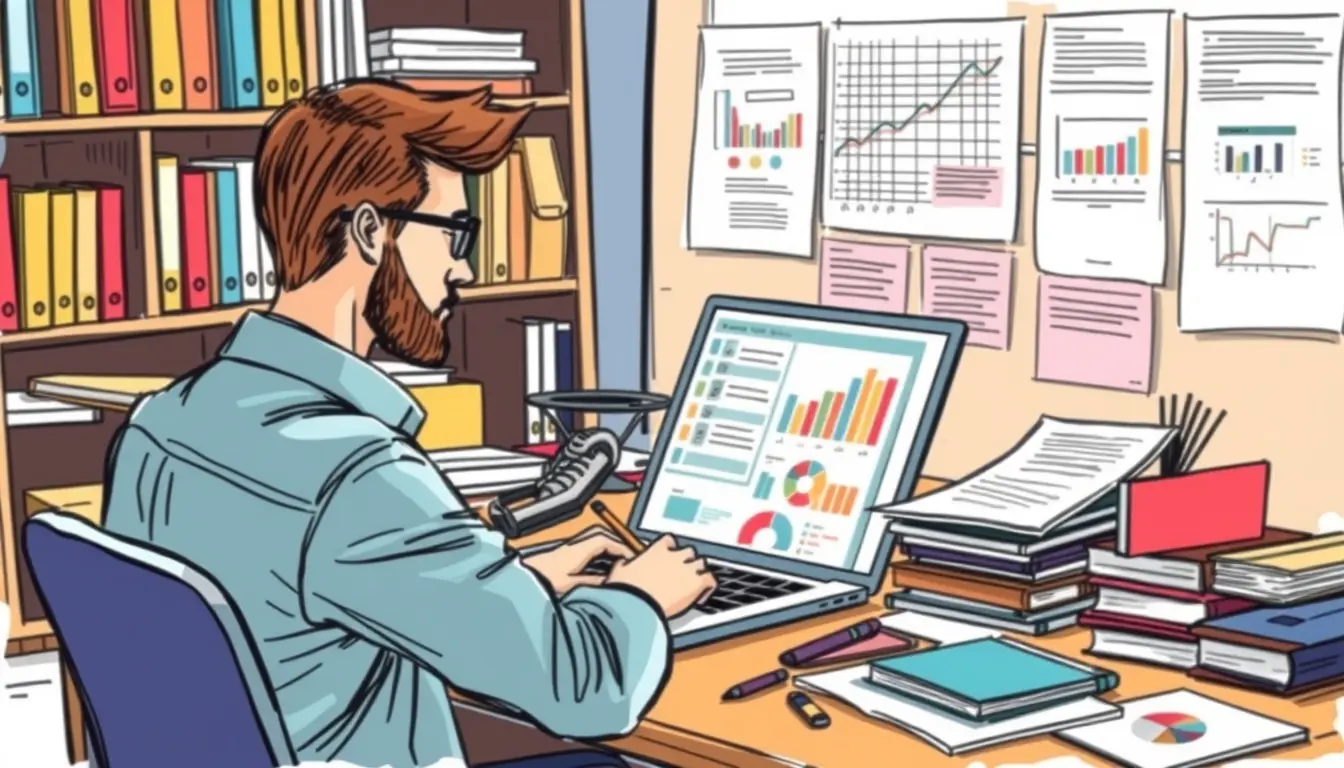What Are User Stories and Why Do They Matter?
User stories are a crucial component of agile software development methodologies. They provide a concise, user-centric way to describe product features and functionality. By focusing on the end-user’s perspective, user stories help teams create solutions that truly address customer needs.
At their core, user stories are simple statements that capture a user’s goal or requirement. They typically follow a standard format: “As a [type of user], I want [an action] so that [a benefit].” This structure ensures that each feature is tied to a specific user and a clear business value.
| Component | Description | Example |
|---|---|---|
| User | The type of user or role | “As a customer” |
| Action | What the user wants to do | “I want to save items to my wishlist” |
| Benefit | The value or outcome for the user | “so that I can easily find and purchase them later” |
The power of user stories lies in their ability to foster collaboration between developers, product owners, and stakeholders. They serve as a starting point for discussions, helping teams prioritize work and make informed decisions about product development.
User stories also promote flexibility in the development process. Unlike rigid, detailed specifications, user stories leave room for creativity and innovation. They focus on the ‘what’ and ‘why’ rather than the ‘how’, allowing teams to explore different solutions to meet user needs.
In agile environments, user stories are often organized into a product backlog. This prioritized list of features guides the development process, ensuring that the most valuable items are addressed first. As the project progresses, user stories can be refined, split, or combined to adapt to changing requirements or new insights.
Let’s explore some practical examples of user stories and how they can be effectively used in various contexts.
User Story Examples for Different Industries
E-commerce Platform
- As a customer, I want to save items to my wishlist so that I can easily find and purchase them later.
- As a seller, I want to offer discounts on bulk purchases so that I can incentivize larger orders.
- As a site administrator, I want to monitor user reviews so that I can maintain the quality of product information.
These user stories address different aspects of an e-commerce platform, focusing on enhancing user experience, increasing sales, and maintaining site integrity.
Healthcare Application
- As a patient, I want to book appointments online so that I can avoid long wait times on the phone.
- As a doctor, I want to access patient medical histories quickly so that I can provide more informed care.
- As a nurse, I want to receive alerts for critical lab results so that I can respond promptly to urgent cases.
In the healthcare context, user stories emphasize improving patient care, streamlining workflows, and enhancing communication between healthcare providers.
Financial Management Tool
- As an investor, I want to view real-time stock prices so that I can make timely trading decisions.
- As a budget planner, I want to categorize my expenses automatically so that I can easily track my spending habits.
- As a small business owner, I want to generate financial reports with one click so that I can quickly assess my company’s performance.
These user stories focus on providing timely information, automating routine tasks, and simplifying complex financial processes for different types of users.
| Industry | User Story Example |
|---|---|
| E-commerce | As a customer, I want to compare product features side-by-side so that I can make informed purchasing decisions. |
| Healthcare | As a patient, I want to receive medication reminders so that I don’t forget to take my prescribed drugs. |
| Finance | As an account holder, I want to set up recurring payments so that I can automate my bill payments. |
| Education | As a student, I want to track my assignment deadlines so that I can manage my workload effectively. |
| Travel | As a traveler, I want to filter hotels by amenities so that I can find accommodations that meet my specific needs. |
Crafting Effective User Stories: Tips and Techniques
Creating impactful user stories is an art that combines simplicity with depth. Here are some key techniques to help you craft effective user stories:
- Keep it concise: User stories should be short and to the point. Aim for one or two sentences that capture the essence of the feature.
- Focus on user value: Always include the benefit or value that the user will gain from the feature. This helps prioritize work and justify development efforts.
- Use personas: Create detailed user personas to help team members empathize with different types of users and their needs.
- Include acceptance criteria: Accompany each user story with clear acceptance criteria that define when the story is considered complete.
- Collaborate: Involve the entire team in creating and refining user stories. This ensures diverse perspectives and a shared understanding of requirements.
- Use the INVEST criteria: Ensure your user stories are Independent, Negotiable, Valuable, Estimable, Small, and Testable.
- Refine regularly: Review and update user stories as you gather more information or as requirements change.
| Criterion | Description |
|---|---|
| Independent | The story should be self-contained and not dependent on other stories |
| Negotiable | Details can be discussed and changed |
| Valuable | Delivers value to the end user or business |
| Estimable | The team should be able to estimate the effort required |
| Small | Should be completable within a single sprint |
| Testable | Clear criteria for determining when the story is done |
By following these techniques, you can create user stories that effectively guide your development process and lead to products that truly meet user needs.
Common Pitfalls in User Story Writing and How to Avoid Them
While user stories are a powerful tool, there are several common mistakes that teams often make when writing them. Being aware of these pitfalls can help you craft more effective user stories:
- Being too vague: Avoid general statements that don’t provide clear direction. Instead, be specific about the user’s goal and the expected outcome.
- Focusing on solutions instead of needs: User stories should describe the ‘what’ and ‘why’, not the ‘how’. Leave room for creative problem-solving by the development team.
- Neglecting non-functional requirements: Don’t forget to include user stories for performance, security, and other non-functional aspects of the system.
- Writing stories that are too large: If a story can’t be completed in a single sprint, it’s probably too big. Break it down into smaller, manageable pieces.
- Ignoring edge cases: Consider different scenarios and user types when writing stories to ensure comprehensive coverage of requirements.
- Lack of context: Provide enough background information for the team to understand the user’s perspective and the business value of the story.
- Not involving the whole team: User stories should be a collaborative effort. Involve developers, testers, and other stakeholders in the process.
| Pitfall | Solution |
|---|---|
| Too vague | Be specific about user needs and expected outcomes |
| Solution-focused | Describe the ‘what’ and ‘why’, not the ‘how’ |
| Too large | Break down into smaller, manageable stories |
| Lack of context | Provide background information and business value |
| Ignoring non-functional requirements | Include stories for performance, security, etc. |
By avoiding these common pitfalls, you can create user stories that are clear, actionable, and truly valuable to your development process.
User Story Examples in Action: Real-World Scenarios
Let’s examine some real-world scenarios to see how user stories can be applied effectively:
Social Media Platform
Scenario: A social media platform wants to improve user engagement by introducing a new feature for sharing short video clips.
User Story: As a content creator, I want to easily upload and share short video clips so that I can engage my audience with more dynamic content.
Acceptance Criteria:
- Users can upload videos up to 60 seconds long
- Videos can be edited with basic tools (trim, add text, filters)
- Videos appear in followers’ feeds and on the creator’s profile
- View count and likes are visible to the creator and viewers
This user story clearly defines the feature from the user’s perspective, specifying the desired action (uploading and sharing short videos) and the benefit (engaging audience with dynamic content). The acceptance criteria provide clear guidelines for implementation.
Mobile Banking App
Scenario: A bank wants to enhance its mobile app by adding a feature for quick balance checks without logging in.
User Story: As a bank customer, I want to check my account balance quickly without logging into the app so that I can stay informed about my finances on the go.
Acceptance Criteria:
- Users can view their primary account balance after fingerprint authentication
- The balance is updated in real-time
- Users can choose which account to display in the quick view
- The feature can be toggled on/off in the app settings
This user story addresses a common pain point for mobile banking users (the need to log in for simple balance checks) and provides a solution that enhances convenience while maintaining security.
Project Management Tool
Scenario: A project management software company wants to improve task prioritization for its users.
User Story: As a project manager, I want to assign priority levels to tasks so that my team can focus on the most critical work first.
Acceptance Criteria:
- Users can set priority levels (High, Medium, Low) for each task
- Tasks can be sorted and filtered by priority
- Priority levels are visually distinct in task lists and boards
- Users receive notifications for high-priority task assignments
This user story addresses the need for better task management, providing a clear feature (priority levels) that delivers value to both project managers and team members.
By examining these real-world examples, we can see how well-crafted user stories guide development efforts towards creating features that truly meet user needs and provide tangible benefits.
Integrating User Stories into Your Agile Workflow
User stories are not just isolated artifacts; they play a crucial role in the overall agile development process. Here’s how you can effectively integrate user stories into your workflow:
- Backlog Grooming: Regularly review and refine user stories in your product backlog. This involves clarifying details, breaking down large stories, and ensuring that high-priority items are ready for upcoming sprints.
- Sprint Planning: Use user stories as the basis for sprint planning. Select stories that align with sprint goals and can be completed within the sprint timeframe.
- Daily Stand-ups: Reference user stories during daily stand-ups to keep the team focused on current sprint objectives.
- Sprint Reviews: Demonstrate completed user stories to stakeholders during sprint reviews, showing how the implemented features meet user needs.
- Retrospectives: Discuss the effectiveness of user stories during sprint retrospectives. Identify areas for improvement in story writing and estimation.
- Continuous Refinement: As you gather user feedback and gain new insights, continuously refine and update your user stories to reflect evolving requirements.
By integrating user stories throughout your agile workflow, you ensure that development efforts remain aligned with user needs and business goals.
Measuring the Success of User Stories
To ensure that your user stories are effectively guiding development and delivering value, it’s important to measure their success. Here are some key metrics and methods to consider:
| Metric | Description | Why It Matters |
|---|---|---|
| Acceptance Rate | Percentage of stories that pass acceptance criteria | Indicates quality of implementation |
| Cycle Time | Time from ‘in progress’ to ‘done’ | Identifies process bottlenecks |
| User Satisfaction | Feedback from end-users | Measures real-world impact |
| Story Point Accuracy | Estimated vs. actual effort | Improves future estimations |
| Business Value Delivered | Impact on key business metrics | Aligns development with business goals |
- Acceptance Criteria Fulfillment: Track how well implemented features meet the defined acceptance criteria for each user story.
- User Satisfaction: Gather feedback from end-users to assess how well the implemented features meet their needs and expectations.
- Story Point Accuracy: Compare estimated story points with actual effort required to complete stories, improving future estimations.
- Cycle Time: Measure the time it takes for a user story to move from ‘in progress’ to ‘done’, identifying bottlenecks in your process.
- Business Value Delivered: Assess the impact of completed user stories on key business metrics (e.g., user engagement, conversion rates).
- Technical Debt: Monitor the accumulation of technical debt resulting from user story implementation, ensuring long-term code quality.
- Team Velocity: Track the number of story points completed per sprint, indicating team productivity and capacity.
By regularly measuring and analyzing these metrics, you can continuously improve your user story writing process and ensure that your development efforts are delivering maximum value to your users and your business.
FAQ
What is the ideal length for a user story?
User stories should be concise, typically one to two sentences long. They should provide enough information to convey the user’s need and the desired outcome without going into implementation details.
How many user stories should be in a sprint?
The number of user stories in a sprint depends on the team’s velocity and the complexity of the stories. A typical sprint might include 5-15 user stories, but this can vary widely based on team size and sprint length.
Can user stories be used for non-software projects?
Yes, user stories can be adapted for various types of projects beyond software development. They can be used in any context where understanding user needs and delivering value is important.
How do user stories differ from use cases?
User stories are brief, high-level descriptions focused on user needs and benefits. Use cases are more detailed, describing specific interactions between users and the system, often including various scenarios and exceptions.
Should every feature have a user story?
Ideally, yes. User stories help ensure that every feature is tied to a specific user need and provides clear value. However, some technical tasks or infrastructure work might not directly correspond to a user story.
Conclusion
User stories are a powerful tool in agile development, providing a user-centric approach to defining and prioritizing features. By focusing on user needs and business value, they help teams create products that truly resonate with their audience.
Mastering the art of writing effective user stories takes practice, but the benefits are substantial. From improved team collaboration to better alignment with user needs, user stories can significantly enhance your development process.
Remember to keep your stories concise, focus on user value, and regularly refine them based on new insights and feedback. By integrating user stories throughout your agile workflow and measuring their success, you can continuously improve your development process and deliver products that delight your users.
As you continue to work with user stories, don’t be afraid to experiment and adapt the format to best suit your team’s needs. The most effective user stories are those that foster communication, drive innovation, and ultimately lead to better products.














Leave a Reply